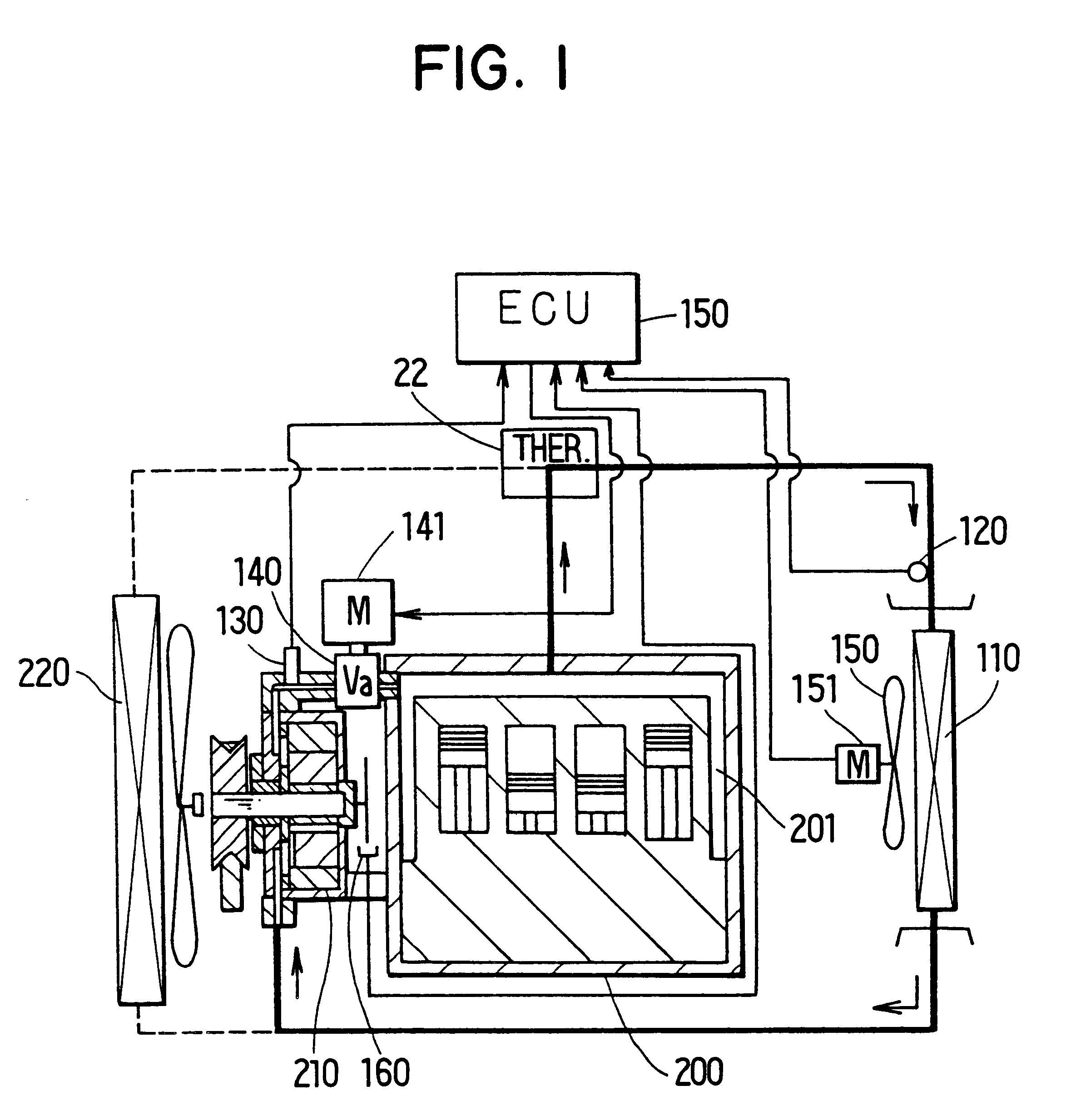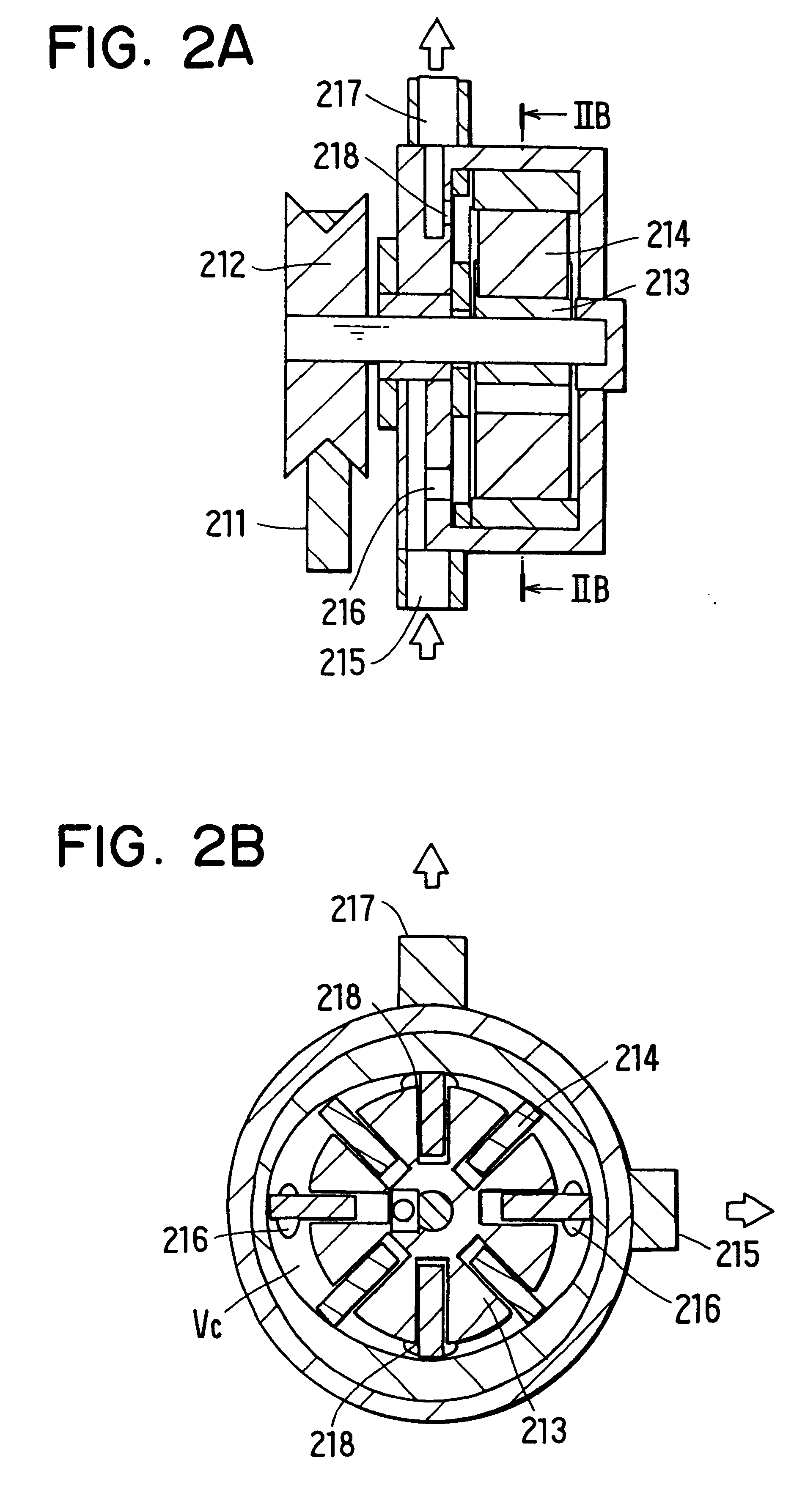Heating apparatus for vehicle
- Summary
- Abstract
- Description
- Claims
- Application Information
AI Technical Summary
Benefits of technology
Problems solved by technology
Method used
Image
Examples
first embodiment
In the first embodiment, air is blown toward the heater core 110 by a blower 152, and the blower 152 is operated by an electrical motor 151. voltage applied to the electrical motor 151, signals from the sensors 120, 130, and a rotation speed Np of the pump 210, detected by a rotation sensor 160, are input into the ECU 150. Therefore, the ECU 150 calculates based on a pre-set program, and outputs signals to control the blower 152, the throttle valve 140 and the pump 210.
Next, operation of a heating apparatus for a vehicle according to the first embodiment of the present invention will be now described. The operation of the throttle valve 140 is controlled in accordance with the flow diagram shown in FIG. 3, and a target pressure Pc for controlling the throttle valve 140 is calculated based on the flow diagram shown in FIG. 4.
As shown in FIG. 3, when a heating switch (not shown) for the heating apparatus is turned on after the engine 200 is operated, water temperature Tw detected by t...
second embodiment
In the second embodiment, the opening degree of the throttle valve 140 and the flow amount of water passing through the throttle valve 140 are controlled based on the necessary heating quantity Q of the heating apparatus. That is, the flow amount of water discharged from the centrifugal pump 210A and the rotation speed Np of the centrifugal pump 210A are controlled based on the necessary heating quantity Q. According to the necessary heating quantity Q of the heating apparatus, a corresponding opening degree K1 of the throttle valve 140 is obtained based on the graph shown in FIG. 10, and a corresponding rotation speed Np of the pump 210A is also obtained based on graph shown in FIG. 9.
Next, the control of the throttle valve 140 according to the second embodiment of the present invention is performed based on the flow diagram shown in FIG. 11. When the heating switch of the heating apparatus is turned on after the engine 200 is operated, the water temperature Tw detected by the temp...
fourth embodiment
Next, operation of the heating apparatus according to the present invention will be now described. Here, operations of the switching valve 190 and the electromagnetic clutch 101 are mainly described.
(1) FIRST MODE
The first mode shown in FIG. 15 is set, when the rotation speed of the engine 200 is lower than a predetermined speed (e.g., idling rotation speed, in the fourth embodiment) during a heating operation. For example, the heating operation is performed when the temperature of outside air is low in the winter, or when the heating switch is turned on. During the first mode, the electromagnetic clutch 101 is turned on so that the driving force of the engine 200 is transmitted to the second pump 100, and throttle control of the throttle valve 140 is performed. Further, the switching valve 190 is operated to a first position shown in FIG. 15 so that cooling water flowing from the engine 200 flows into the suction side of the second pump 100. That is, when the switching valve 190 is...
PUM
 Login to View More
Login to View More Abstract
Description
Claims
Application Information
 Login to View More
Login to View More - R&D
- Intellectual Property
- Life Sciences
- Materials
- Tech Scout
- Unparalleled Data Quality
- Higher Quality Content
- 60% Fewer Hallucinations
Browse by: Latest US Patents, China's latest patents, Technical Efficacy Thesaurus, Application Domain, Technology Topic, Popular Technical Reports.
© 2025 PatSnap. All rights reserved.Legal|Privacy policy|Modern Slavery Act Transparency Statement|Sitemap|About US| Contact US: help@patsnap.com



